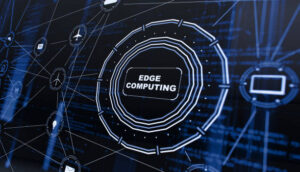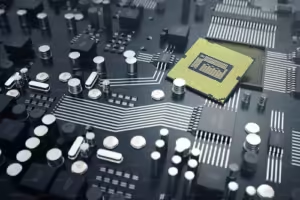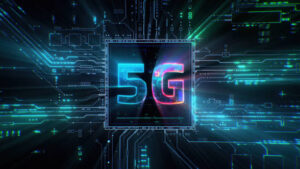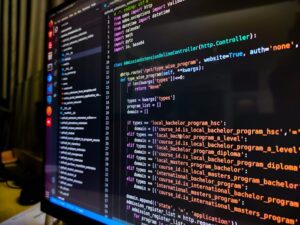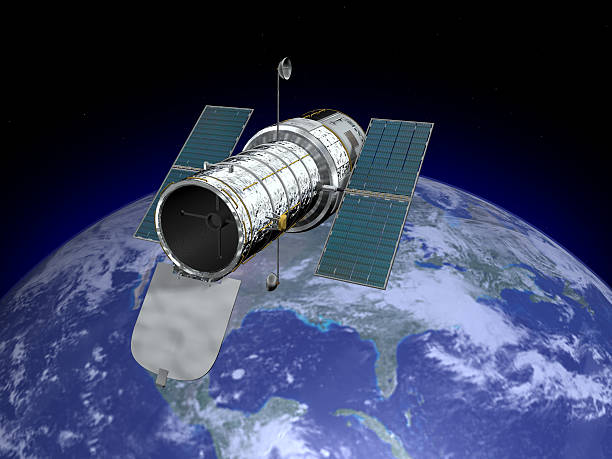
Hubble Space Telescope
The Hubble Space Telescope Review
The Hubble Space Telescope has been the most important scientific tool in history. Although it has altered our perception of the cosmos, it has also raised important new queries regarding the nature of matter itself.
In addition to its amazing pictures and scientific discoveries, Hubble has observed light from galaxies farther away than ever before and proven the broad distribution of black holes.
Galileo constructed the first telescope in 1609 and quickly directed it toward the night sky. The telescope was an effective instrument that resulted in a thorough review of Earth’s position within the cosmos
Newton created the reflecting telescope in 1668 to solve the issue of uneven light refraction at various wavelengths. Astronomers quickly adopted the reflecting telescope as their preferred design.
William Herschel discovered the planet Uranus in 1781 using a device he had built himself. The Newtonian telescope was enlarged to enormous proportions, and Edwin Hubble realized in 1924 that the Milky Way was only one galaxy among many when he used the 2.5-meter hooker telescope at Mount Wilson Observatory.
Astrophysicist Lyman Spitzer first proposed the idea of a telescope in orbit above Earth’s atmosphere in 1946.
exceeded the capabilities of the time’s technology, but in 1966 NASA started deploying a number of orbiting celestial observatories.
The low-Earth orbit telescopes were the first to see the night skies in the ultraviolet region of the spectrum, albeit only two were successful.
Plans for a massive orbiting telescope were created in the 1970s, and one of its requirements was that it be visited frequently. something that may be done by maintenance crews once the space shuttle was put into operation
Originally scheduled for launch in 1979 under the name Large Space Telescope, building delays resulted in
Additional delays were caused by multiple postponements after the Challenger catastrophe.
Also Read: 14 New Technological Forecasts for 2030 That Will Reform The World
The Hubble Space Telescope was given its current name in 1983 in remembrance of the person who provided evidence that the universe was expanding. At last, Hubble was prepared for flight in April 1990.
Hubble and the space shuttle have a special link that would allow the shuttle to visit the telescope five times. Sometimes, nobody realized how important these missions would be at this point.
The telescope’s release was standard procedure. Astronomers at the Space Telescope Science Institute in Baltimore had to carefully examine Hubble’s control and communication systems for several weeks before they could finally see that the telescope’s initial images were not as good as expected. The telescope’s mirror had been precisely positioned during manufacturing, but it was shaped incorrectly. An improperly put together test instrument had been used, and no one had checked it twice.
As soon as a solution was realized, the telescope could be equipped with a correction device. The high-speed photometer would be retired to make place for co-star, another one of those clumsy NASA acronyms that trained astronauts for the task of precisely placing a series of small mirrors to compensate for the major mirror’s flaw.
Apart from adjusting the optics, several other changes were implemented to establish a new broad field planetary. A camera would be set up. The original was no longer relevant.
The solar panels on the telescope would be changed. two gyroscopes, additional magnetometers, and a new electronics processor would be substituted.
At last, the project to repair Hubble started in December 1993. It took three days to catch up with Hubble, and it was immediately apparent that one solar panel was damaged. The telescope required extensive maintenance, and five spacewalks were planned.
Initially, the Hubble was stabilized while the work was being done by the robotic arm of the shuttle. The assigned duties were completed over the course of five days by two teams of two astronauts each, with the Space Telescope Operations Control Center keeping an eye on the Hubble’s performance as each new component came online.
With the exception of the damaged solar panel, the majority of the restored parts were stored in the cargo bay for return to Earth.
panel that was left floating in space. All five spacewalks proceeded as scheduled, with the main obstacle being the challenge of shutting the telescope’s doors.
Hubble was freed on the ninth day of the mission, and it assumed control just like on the ground.
extra month to thoroughly inspect the new systems on the telescope
Even though Hubble had been fixed in December 1993, it would take local workers nearly two months to when astronomers finally saw findings, they were astounded by the quality the telescope was producing after putting it through a difficult set of optical alignments to ensure that it was operating correctly.
A repair mission had been accomplished thanks to the assistance of a potent new instrument that was now at their disposal. The Space Telescope Science Institute’s astronomers started tending to a backlog of urgent requests for Hubble time.
A Comet That Was Orbiting Jupiter captured by Hubble Space

A comet was found orbiting Jupiter in March 1993; its trajectory indicated that it had only been lately drawn toward Jupiter’s gravitational field and would soon collide with the planet.
Nobody has ever witnessed a collision between two bodies in the solar system, and predictions for how soon the impact would be apparent varied. Hubble took this picture of a series of pieces. Jupiter’s gravity had shattered Comet Shoemaker Levy 9.
The pieces varied in size from a few hundred meters to several kilometers in diameter.
Over the course of six days in July 1994, Hubble witnessed the fragments collide with Jupiter’s dark face.
The impact region displayed a sequence of black swirls as the planet rotated; some of these Dark Shadows were as big as the Earth and they lingered in Jupiter’s atmosphere for months. Hubble Space Telescope spectrum analysis revealed diatomic sulfur and carbon disulfide, which had never been seen at Jupiter before, but the amounts found were too large to have come in with the comet; instead, they had been agitated up from the planet’s interior.
Although scientists gained a great deal of knowledge from witnessing these impacts, the observations nearly didn’t happen
Also Read: 25 HIGHER LEVEL TECHNOLOGICAL DEVICES
Days prior to the scheduled first effect
Hubble exhibited erratic behavior before entering safe mode, during which it would not carry out any commands.
When technicians saw anything was wrong with the memory, they switched to the new memory that had been placed on the most recent service mission.
Things began to get better before the spaceship announced that it had reached zero gyro at some point.
The situation appeared to have drastically deteriorated due to the failure of two gyroscopes. The cause of the problem was identified as a counter that ran out of numbers to count. The problem was promptly comprehended and fixed.
The incident demonstrated the complexity of Hubble operations and the need for ground engineers to acquire new hardware operation skills. Although Hubble is a telescope, it is also a spacecraft that requires precise control because, unlike other spacecraft, it lacks thrusters and the chemical residue from rocket engines would quickly contaminate the Precision Optics.
In order to make it move, There are four reaction control. Each of the three 45-kilogram wheels is controlled by the telescope’s computer, and when they spin, the telescope will rotate in the opposite direction. The wheels are arranged in angled pairs around Hubble’s center of gravity, and the telescope can point precisely in any direction.
To ensure that Hubble can stay pointed precisely, three tiny guidance sensors near the back of the telescope will lock onto any of a number of bright guide stars. One of the reaction control wheels was replaced in 1997 during the space telescope’s second servicing mission because it had developed an electrical fault.
The telescope’s third essential component is its capacity to monitor the pace and direction of its movement. Hubble only needs two guiding sensors to point precisely; these sensors are so sensitive that they can pick up wobbling in the motion of nearby stars.
Six gyroscopes aboard Hubble are used to detect the telescope’s orientation; these are crucial for aiming the instrument in a new direction.
Hubble only required three units when it was created, but because gyro spins at 19,200 RPM and they do wear out, there are now six.
Hubble can now point with just two gyros thanks to improved algorithms, though less precisely. Work has also been done to allow Hubble to operate at a lower capacity with just one gyroscope.
Hubble can point with an accuracy of better than two millionths of a degree. Because of its ability to remain focused on a small, empty area of the sky for extended periods of time, astronomers were able to make a singular observation in 1995: they pointed Hubble at a small, empty area of the sky close to the constellation Ursa Major for ten days.
The outcomes stunned everyone, there were a tons of irregularly shaped galaxies in this unoccupied section of the sky. Some of them had a 13 billion-year age.
Hubble had observed the creation of new galaxies in the past, observing a variety of morphologies not observed in galaxies closer to our own Milky Way.
Known as the Deep Field survey, it was the first of several such investigations into regions of the sky where nothing had been observed before. Using spectral data known as redshift, which represents a body’s distance from Earth, animators have given these pictures more dimension.
Hubble was developed in part because of this entirely new field of astronomy, but the Space Telescope was already experiencing design limitations.
The next servicing mission would include the installation of this upgraded equipment, which would improve the telescope’s performance in the near infrared region of the spectrum. Additionally, new support equipment like a solid-state recorder would replace the original reel-to-reel recorder.
However, even in this early phase of Hubble’s existence, scientists were aware of its limits. Even with improvements, the telescope could not be kept cold enough to observe the enormous redshift wavelengths that revealed extremely old, very far objects. The distant galaxies it had observed were reaching the extent of its view in the infrared part of the spectrum.
Plans were drafted for a larger telescope that would be able to explore the farthest reaches of the cosmos, called the Next Generation Space Telescope, but Hubble was still capable of performing tasks that no other telescope could, and there didn’t seem to be any reason why it couldn’t keep getting upgraded with the newest technology as it became available.
The Space Shuttle Discovery made a second servicing visit to Hubble in early 1997. Astronauts installed new instruments to increase the telescope’s infrared reach. In 1999, Discovery made a second visit to Hubble; this time, the mission was accelerated because four gyroscopes had failed and the telescope had entered safe mode.
In 2002, the telescope Columbia took off with a new tool: a sophisticated survey camera. When it left, it would take the place of the weak object camera, the final remaining piece of Hubble’s original equipment, returning Hubble to peak condition.
Less than a year later, at the conclusion of its subsequent mission, Columbia burned during re-entry because thermal protection tiles had been damaged by loose foam insulation during launch.
Following a thorough investigation and a protracted hunt for debris, it was determined that the shuttle system was aging.
The Hubble Space Telescope was doomed to die since it would be abandoned after the International Space Station was finished and no other missions could use it.
Within the halls of authority, Hubble had supporters; the sheer beauty of the telescope’s images elevated it to a public position, and prominent Senators started advocating for a single, final servicing mission. Following the appointment of a new administrator at NASA, a final shuttle flight to Hubble was reinstituted, and work on what amounted to a rebuild of Hubble’s operational systems and an upgrade of scientific instruments commenced.
A new set of batteries would replace the original ones that Hubble was still using. New fine guidance sensors would be installed, all gyroscopes would be changed, and training would start to open up the Imaging Spectrograph and replace an Electronics board. The advanced camera for surveys had also malfunctioned, and its repair work was viewed as even more detailed.
As a result of Atlantis’ inability to reach the International Space Station from Hubble’s orbit and the necessity for the shuttle to run on a backup, the shuttle Endeavor was readied for a rescue mission. On May 11, 2009, Atlantis was stationed on NASA’s pad 39a, ready for Hubble’s final servicing mission.
In order to give the orbiting telescope the greatest potential lifespan, this was to be the most intricate servicing mission.
The 14-day operation proceeded as planned; any issues that emerged were resolved, and Hubble was ultimately made available to the public as the greatest telescope ever.
